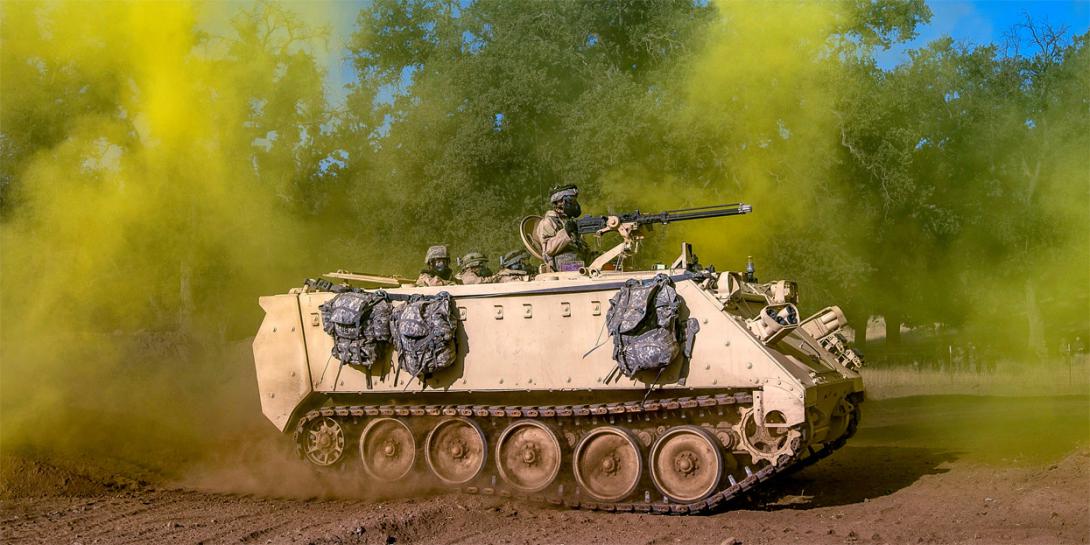Jette: We Need to Re-Examine Our Industrial Base
Advanced manufacturing techniques could inject innovation into the defense industry, suggested Bruce Jette, assistant secretary of the Army for acquisition, logistics and technology.
“We have a problem with the industrial base, particularly for the defense industry,” Jette told the audience at the Association of the United States Army annual conference in Washington, D.C. He added that the industrial base still conjures images of “large, smoking cauldrons of steel” because “that’s what we drove them to.”
Jette further noted that the industrial base “has some gaps in it because we haven’t been producing large equipment systems in a long time.”
Part of the problem, he elaborated, is that the country is short on tradespeople, such as welders. “Now, we’re developing our own system for welders. We’re teaching welders because everybody’s trying to go to college and nobody’s trying to go to trade schools, even though tradesmen often make more than people [graduating from] college, and that’s before they start paying off their college loans,” Jette said.
Welding military vehicles requires extra skill. “We’ve got in the country generally, a shortage of skilled craftsman … able to understand how to convert the science and technology of just welding into something that actually produces a vehicle that’s able to hold itself together, particularly under the stressful conditions we require,” he explained. “We have to take a broad look at the industrial base we use, particularly for the heavy technologies, and make a determination as to how we might support [industry] in their development of the workforce that they need.”
Secretary of the Army Ryan McCarthy recently released a policy for advanced manufacturing, which includes 3D printing and other options. One option is conformal manufacturing, in which a machine is programmed to bend steel into whatever shape is desired. Jette reported seeing such a machine in action at the University of Chicago. “It’s a very cool looking machine, but you definitely want to stand back,” he quipped. He also cited so-called subtractive manufacturing and an additive process involving castings.
“We’ve got to have the industrial base begin to take a look at how they get those pieces integrated into how they do business. We have to start with the design phase, consider the advanced manufacturing capabilities, consider how we’re going to employ those in the industrial base so that it’s part of our manufacturing methodologies, ensure we’ve got a workforce that can work that and then come back to how to sustain things if we’re going to evolve the systems.”
Advanced manufacturing could change the way the Army sustains heavy equipment. Traditionally, for example, the service purchases, and stores for long periods, large numbers of transmissions for armored vehicles such as the M113 armored personnel carrier. Jette said he has transmissions in storage today that probably belonged to the original M113, although he indicated he couldn't be sure they are original transmissions.
“We can’t afford that. We need to find ways to be more agile in our sustainment. That only works if we start here at the front end, thinking about all the ways to inject the new technologies into the industrial process,” he offered.
The defense industry needs to build in the type of manufacturing flexibility demonstrated by automakers, which put out new models every year. “How come we in the defense industry have not designed our production capabilities to be able to accommodate that type of change? They do it on an annual basis. I’m looking for five years.”
The Army actually owns part of the industrial base, such as depots, and is modernizing.
On the commercial side, Jette also has begun conversations with industry executives “to initially get a feeling as to how we attack this problem” and is “working on trying to see if we can improve our overall planning process.”
Lt. Gen. Neil Thurgood, USA, director, hypersonics, directed energy, space and rapid acquisition, noted during the panel session that the Army is having to build an industrial base for hypersonics.
“In the hypersonic domain, we are trying to build an industrial base as we take this technology that was developed by our great science and technology community, rapidly remove it from the S&T community, and put it into a commercial base that doesn’t exist for that technology. How you do that kind of work is a little bit different than how you do directed energy work where you try to exercise an existing industry base for a rapid outcome,” said Gen. Thurgood, who also leads the Army’s Rapid Capabilities and Critical Technologies Office.
Jette pointed out that there is a strategic component to the industrial base as well. “I certainly can’t bring microchip production back into the United States, but it would sure be a good thing if we would try it,” he said.





Comments